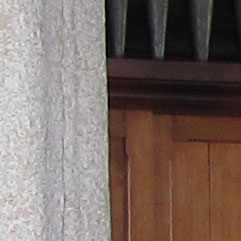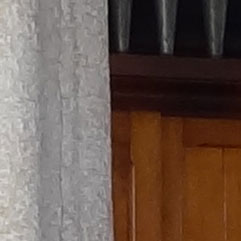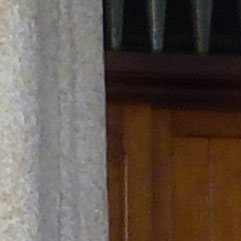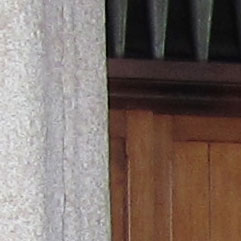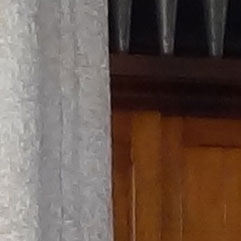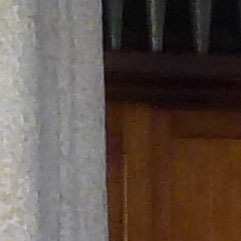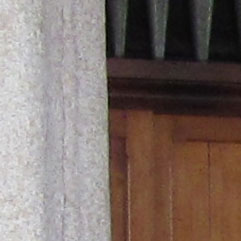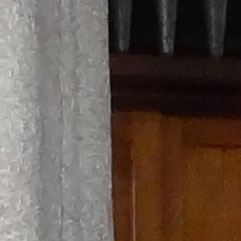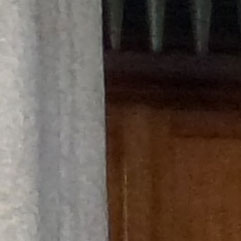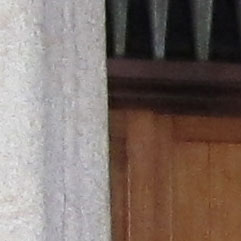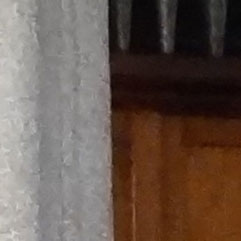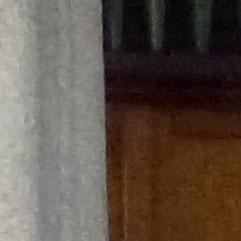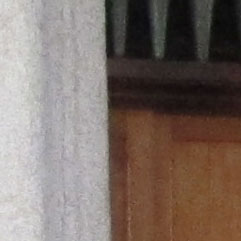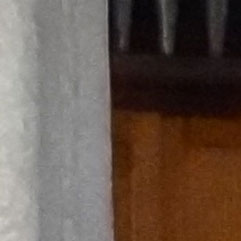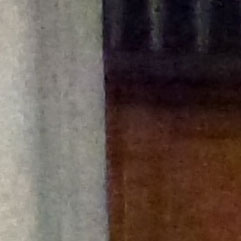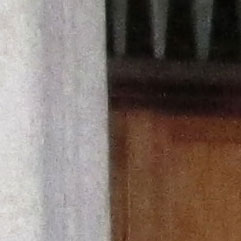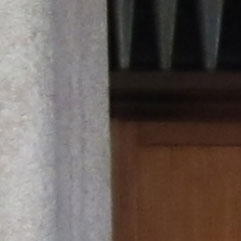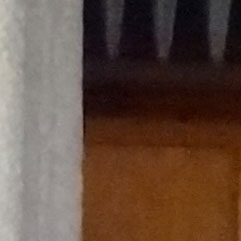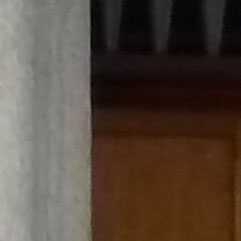Canon PowerShot SX230 HS
-
-
Written by Gordon Laing
Quality
Canon PowerShot SX230 HS vs Sony Cyber-shot HX9V vs Panasonic Lumix TZ20 / ZS10 Resolution
|
Canon PowerShot SX230 HS |
Sony Cyber-shot HX9V |
Panasonic Lumix TZ20 | ||
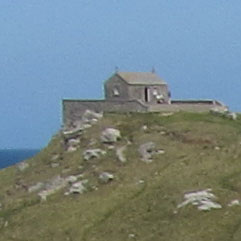 | 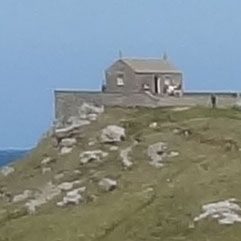 | 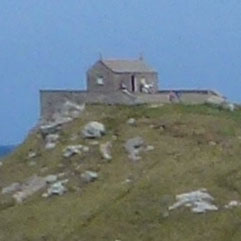 | ||
f4, 100 ISO |
f8, 100 ISO |
f4, 100 ISO | ||
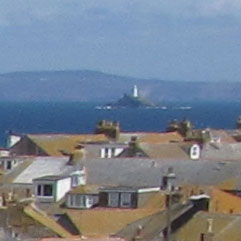 | 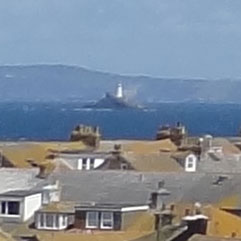 |  | ||
f4, 100 ISO |
f8, 100 ISO |
f4, 100 ISO | ||
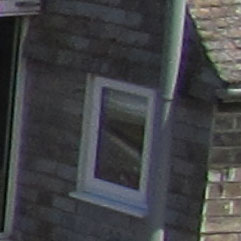 | 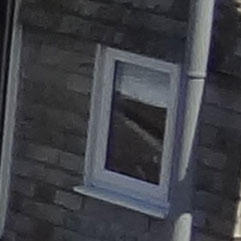 | 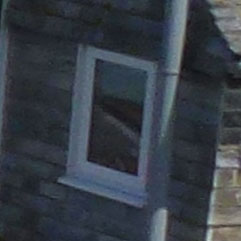 | ||
f4, 100 ISO |
f8, 100 ISO |
f4, 100 ISO | ||
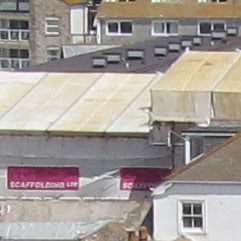 | 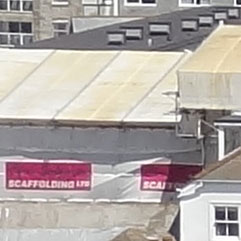 | 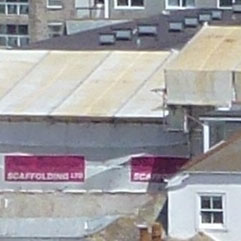 | ||
f4, 100 ISO |
f8, 100 ISO |
f4, 100 ISO |
Canon PowerShot SX230 HS results : Real-life resolution / High ISO Noise
Canon PowerShot SX230 HS vs Sony Cyber-shot HX9V vs Panasonic Lumix TZ20 / ZS10 Noise
To compare noise levels under real-life conditions we shot this scene with the Canon PowerShot SX230 HS, the Sony Cyber-shot HX9V and the Panasonic Lumix TZ20 / ZS10 within a few moments of each other using their best quality JPEG settings at each of their ISO sensitivity settings. All three cameras were set to Program auto exposure mode and the lenses were set to approximately the same field of view, around 5mm to match the PowerShot SX230 HS. The ISO sensitivity was set manually. The above shot was taken with the the Canon PowerShot SX230 HS in Program auto mode. The lens was set to its default wide angle setting of 5mm (28mm equivalent), the sensitivity was set to 100 ISO and the exposure was 0.4 seconds at f3.1. The crops are taken from the area marked with the red square and presented below at 100%. As with the outdoor resolution test, the PowerShot SX230 HS makes a strong start. The 100 ISO crop shows excellent detail with a minimal degree of noise which is visible, but ‘natural’ and unprocessed looking. At 200 ISO there’s an ever so slight degradation with the graininess amplified so you can see the noise texture in the wood panelling, but it isn’t yet affecting the detail in the stone column on the left. By 400 ISO there is a step change, with a clear battle going on between the emerging noise and the PowerShot SX230 HS’s attempts to keep the lid on it, successfully, I think it’s fair to say. Yes, there’s a good deal of graininess around and it’s obscuring some of the image detail, but as usual, Canon has struck a good balance between suppressing the noise and hanging on to the all-important image detail. At 800 ISO the PowerShot SX230 HS has crossed line beyond which getting the shot becomes the object and image quality takes second place. There’s a lot of noise now and very little you can do about it, but at smaller than 100 percent view 800 ISO images still look passable and even the 1600 and 3200 ISO shots retain enough detail to make a decent enough snap. The PowerShot SX230 HS’s Handheld Night Scene composite mode selected a sensitivity of 800 ISO and produced a result that’s smoother and, at 100 percent looks to retain less detail than the straight 800 ISO shot, but comparing the two shots at reduced size side-by side, I’d have to say that, personally, I thought Handheld Night Scene produced the better result. Compared the the Sony Cyber-shot HX9V, there’s not much in it at the start, though the PowerShot SX230 HS 100 ISO crop looks to have the better of it in terms of fine detail. At 200 ISO, though, the Cyber-shot HX9V crop takes a sharp quality dip with agressive noise procesing resulting in significant detail loss. At each step up the ISO scale the quality gap between the PowerShot SX230 HS and Cyber-shot HX9V gets progressively bigger. While the Cyber-shot HX9V can produce great results at its base 100 ISO setting, once you raise it the cracks begin to show up pretty quickly. We’ve included the Cyber-shot HX9V’s anti motion blur composite scene mode in preference to Hand-held Twilight mode which, though qualitatively better, underexposed the scene. Compared with the Panasonic Lumix TZ20 / ZS10 it’s a similar story, except that the Panasonic starts out further behind the PowerShot SX230 HS at 100 ISO and doesn’t deteriorate quite as much in the step up to 200 ISO as the Cyber-shot HX9V. If you cast your eye along any of the rows in the crop table it’s a similar story though, with the PowerShot SX230 HS way out in front with the Cyber-shot HX9V and Lumix TZ20 / ZS10 some way behind. Though it lacks a full resolution 3200 ISO setting the Lumix TZ20’s High Sens scene mode produces 3M images at 3200 ISO and the Handheld Night Shot mode has produced a good result at 400 ISO. Now head over to our PowerShot SX230 HS sample images to see some more real-life shots in a variety of conditions.
|
Canon PowerShot SX230 HS results : Real-life resolution / High ISO Noise
